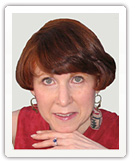e-Tips
How To Unblock The Generational Gridlock

I am frequently asked about the potential for conflict between older and younger people in the workplace “Why won’t those Boomers realize it’s time to go?” some of them think.
Boomers are sticking around for two credible reasons: 1) they like the fulfillment, feeling of making a contribution, challenge and social opportunities work brings; and 2) they may very well need the money. In some cases there is a third reason as well: uncertainty that successors are well prepared to shoulder their greater responsibilities.
Economic reality meets career desires. The Great Recession had given many organizations a breather from brain-drain threats. At the same time, many Boomers would like to keep on working for a long time more, even if they can afford to retire. Surveys in 2004 and 2005 when the economy was robust and retirement funds were healthy revealed that about 80% of Boomers wanted to keep working after age 65 in some capacity – reinventing retirement.
While personal priorities will dominate each individual’s decisions, there’s a bigger-picture need for restructuring. Even if we should see a booming economy, things won’t go back to what they were 20 years ago because the generational cohorts have different worldviews and expectations for their careers and work lives. And, significantly, they don’t understand each other’s perspectives and influences very well. When that understanding is achieved and accepted on an emotional level, we can move to greater cross-generational respect and collaboration.
REMOVING POTENTIAL CONFLICT
Achieve role shifts and transitioning that benefits clients/customers and the organization as a whole. I am not in favor of involuntarily removing productive people, who do not wish to retire. Yet for the sake of providing opportunities to the generation waiting in line, senior professionals’ and executives roles and responsibilities need to shift at some point.
Shifted roles must come with respect attached. The transitioning process requires employers to rethink value and compensation for functions that were assumed to be provided gratis in the context of professional roles. Too often financial rewards come only from performing other functions that leave little time for knowledge transfer, mentoring, training and coaching. Financial disincentives need to be eliminated to reduce conflict.
And oh by the way – a word to Boomers and senior professionals: Gen Y/Millennials have discovered and seek out role shifts and lateral/lattice moves that keep them learning and doing new things. It energizes, engages and provides more choices and marketability for the long term. So why not take a lesson from them and explore that avenue to extend a career while giving those experienced and waiting a chance to move up? Consider it an opportunity.
The trick is to capitalize on Boomer knowledge and experience without alienating the bottlenecked Gen Xers and Gen Y/ Millennials. One answer is to pay Boomers still in place now to transition their valuable acquired wisdom, contacts and skills before they up and leave with these precious assets or fail to pass on the baton and client bonds. That will prepare the next generations to thrive when the bottleneck opens as Boomers transition out over time.
If knowledge transfer and coaching is not built into transitioning roles which are made attractive by according them respect and providing work/life flexibility and engaging challenges, how will the next generation of leaders and managers get prepared to succeed? Willingness to prepare the next generation and shift roles through gradual transition can avoid generational conflict as both generations reap the benefits.
The real enduring challenge is building sustainably strong organizations that engage and retain the most productive talent of every generation. It will take frequent dialogue, listening, mutual mentoring and empathy. Organizations have to assess and re-think the connections between attitudes and expectations and the policies and financial and non-financial incentives that foster attitudes in order to prevent tensions among the generations and provide continuing opportunities for all to make meaningful contributions.
© Phyllis Weiss Haserot, 2015
* The generational chronology for easy reference: Generations are defined by the similar formative influences – social, cultural, political, economic – that existed as the individuals of particular birth cohorts were in adolescent-early adult years. Given that premise, the age breakdowns for each of the four generations currently in the workplace are approximately:
Traditionalists: born 1925-1942
Baby Boomers born 1943-1962
Generation X born 1963-1978
Generation Y/Millennials born 1979-1995
Struggling with how to achieve vital knowledge transfer among the generations? Ask about our highly praised workshop “Avoiding the Cliff: the Relationship Side of Succession Planning and Knowledge Transfer.”
Check out our signature program GENgagenenttm: 5 Things to Know About Each Generation that Will Change How You Interact, Persuade, Recruit, Retain and Sell.
Make sure every day is a Cross-Generational Conversation Day at your organization.
Contact us to learn about the process, tools, and how your firm/organization can participate in the coming year.
For coaching, training and special programs on inter-generational challenges for and among 4 generations in the workplace, attracting and retaining clients and employees of different generations, and maximizing the potential of young professionals and work teams, call or email Phyllis for an exploratory talk or complimentary coaching session at 212-593-1549 or pwhaserot@pdcounsel.com.
Phyllis is available to speak at your organization or at firm retreats on inter-generational relations and organizational effectiveness topics. Call or e-mail for a list of topics or to custom-tailor your own.
